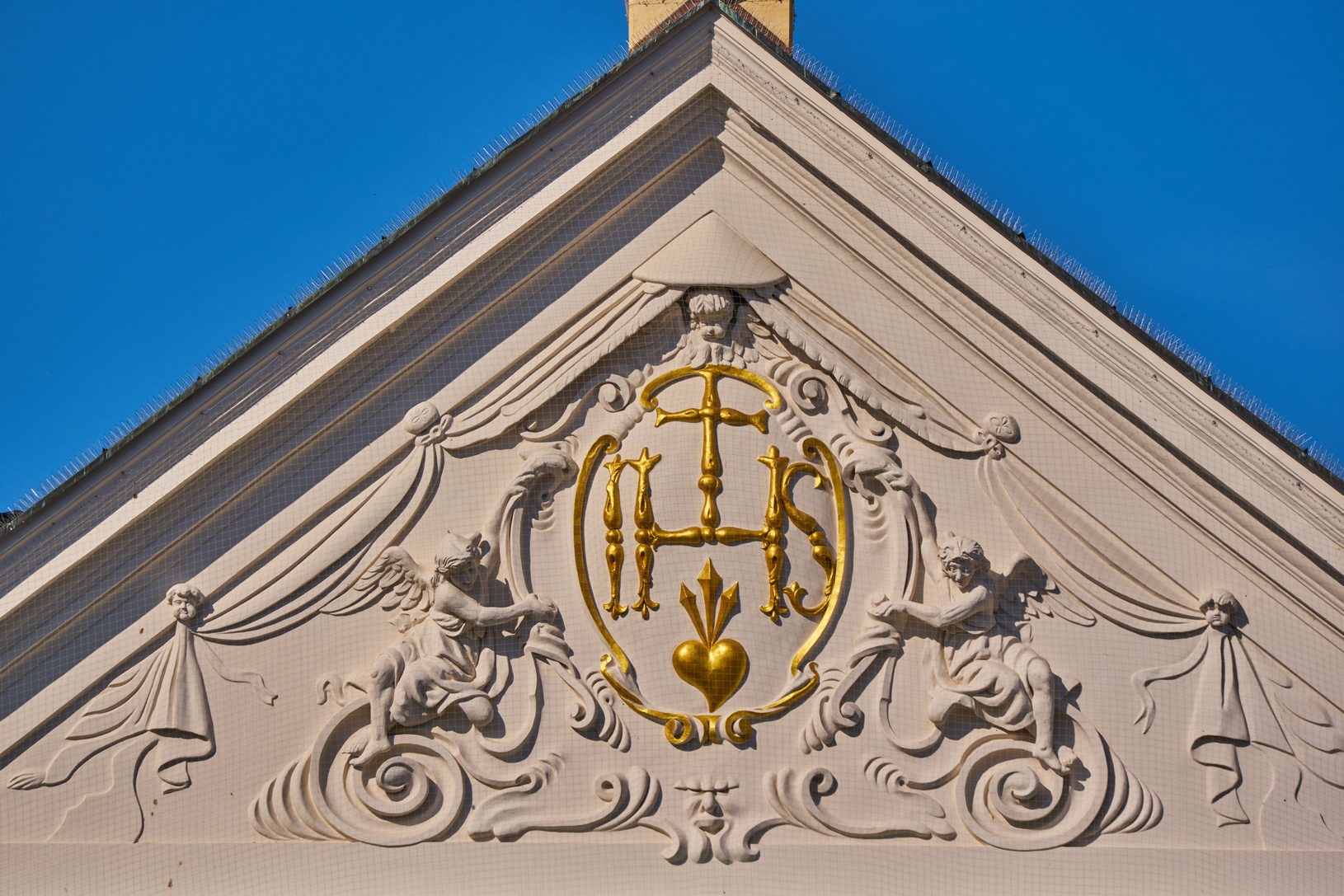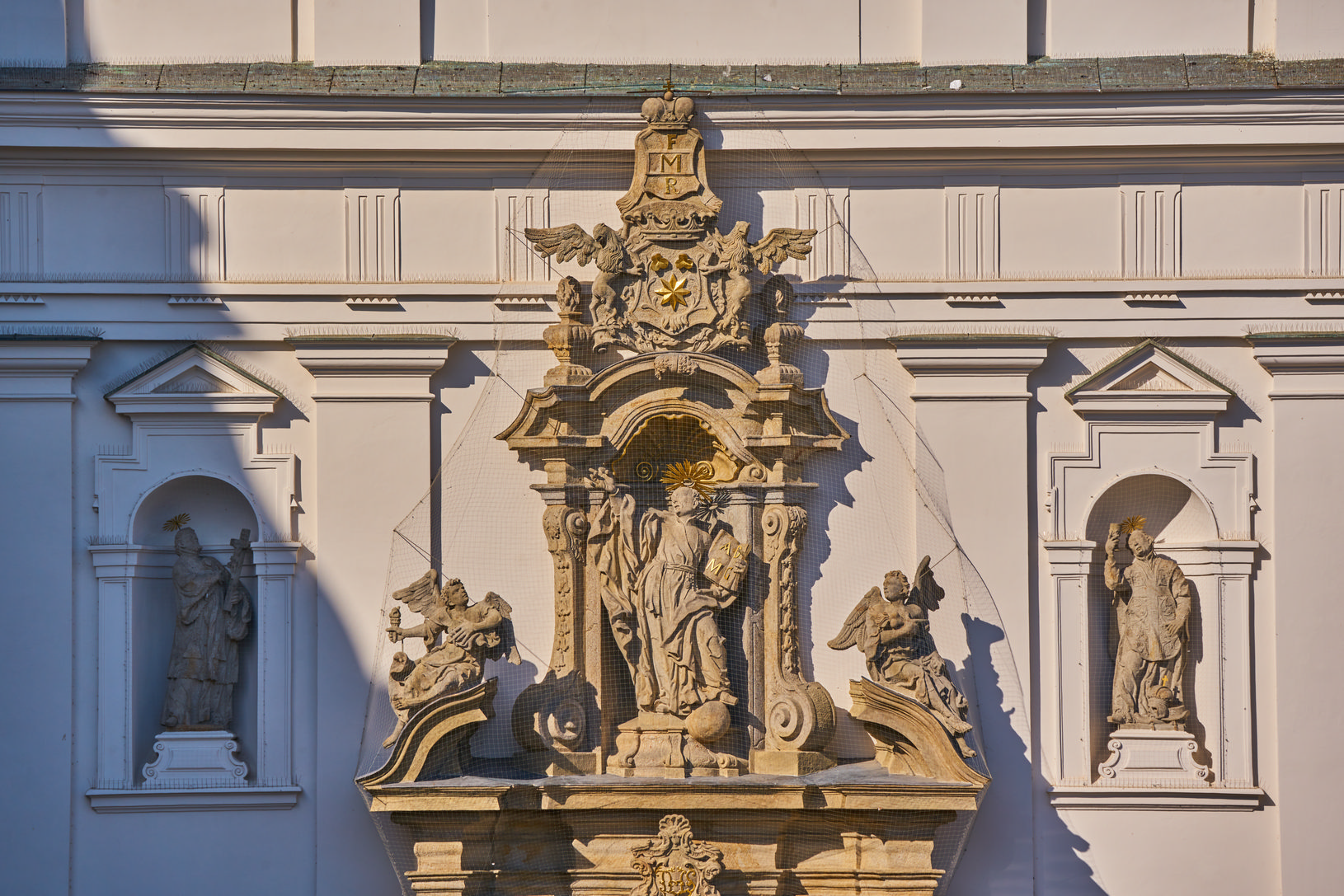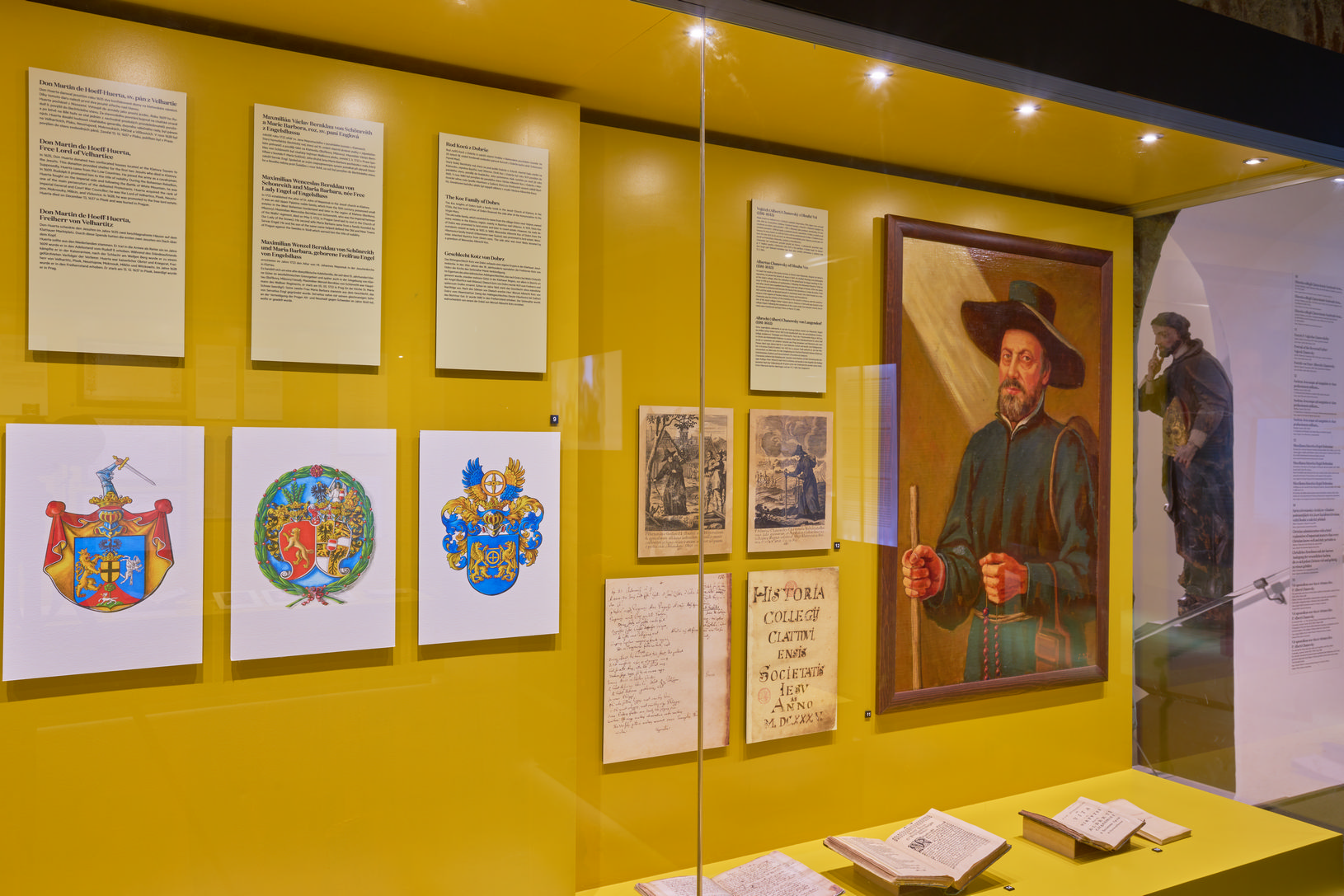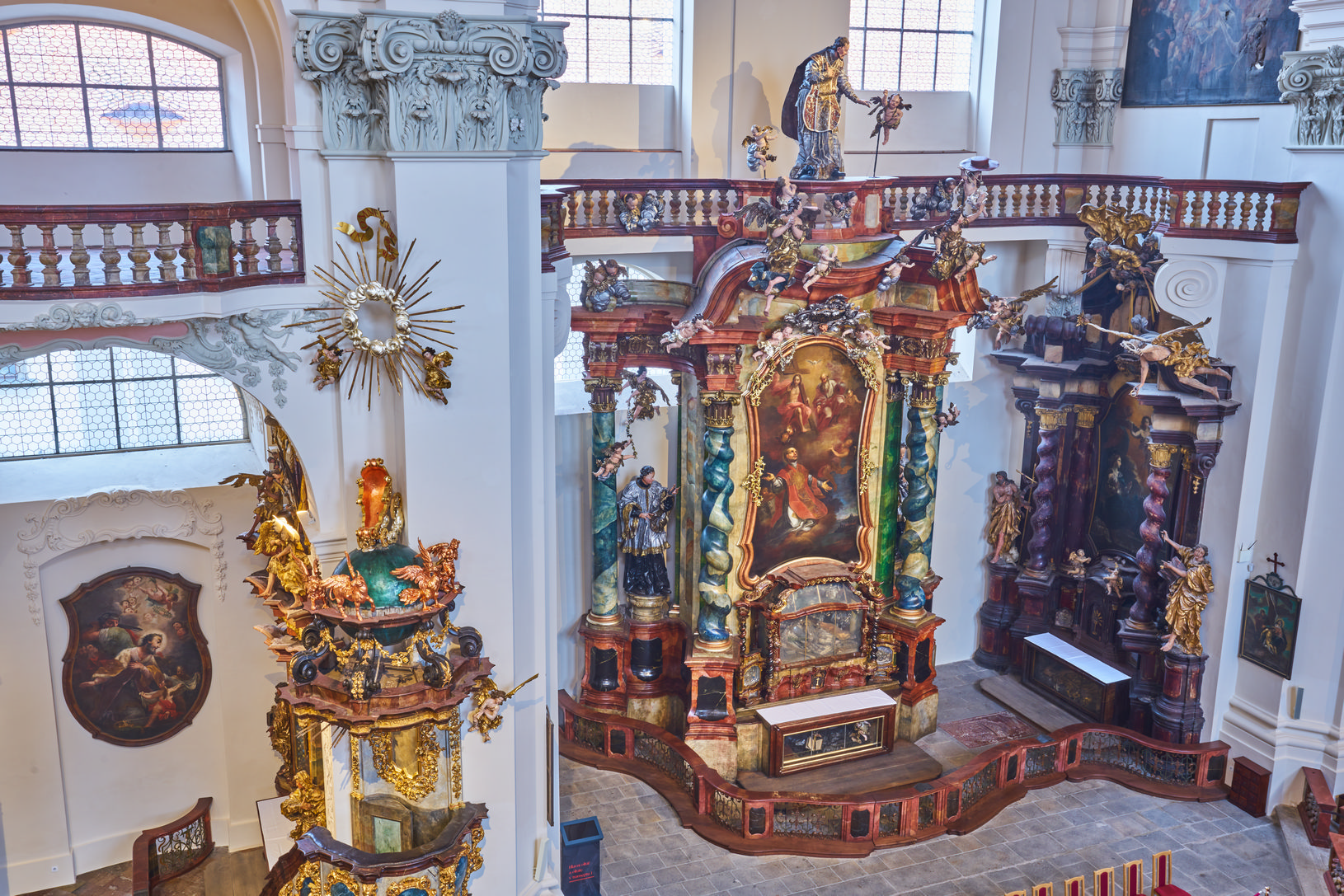The Jesuits in Klatovy


The first two Jesuits came to Klatovy on March 11, 1636. Their arrival was preceded by the successful activity of the missionary P. Vojtech Chanovsky from Dlouha Ves, who had been active in this region since 1621. Encouraged by his activities, Catholic noblemen from the surrounding area wrote a request to the provincial of the Society of Jesus to establish a grammar school and college in Klatovy in 1635. The establishment of the first Jesuit residence in the city was made possible by Martin de Hoef Huerta, who donated two houses at the Square to the Jesuits, where they temporarily settled; in the autumn, they began to teach their first six pupils.
Soon, the Jesuits began thinking about building their own new college and church. They gradually bought land in the southwestern part of the city, behind the Black Tower. They raised funds from their own economic activities and donations. Important donors of the Jesuits included Fr. Marek Saller of Blatna and Vaclav Herolt of Komburk. The residence was upgraded to a college in 1642, but remained in the purchased town houses.

In 1651 the Klatovy Jesuits received a significant bequest in the amount of 60,000 guldens from Jiri Adam of Martinice and his sister Lucie Otilie, married as countess of Kolowrat. It was possible to start preparing plans for the construction of a new college and church. In 1653, P. Theodor Moretus, who already had practical experience with the construction of the Jesuit college in Breznice, became the rector of the college. He changed the existing ideas and plans and likely decided to place the church in the direction of the square. The plans for the church and the college were made by the Italian architect Carlo Lurago. The foundation stone of the college was laid on April 13, 1655, and a year later, the construction of the church began on April 24, 1656. Records of the construction work of the Jesuit complex are scanty, but there are records concerning the completion of the school building at a cost of 10,000 guldens dating back to 1660; in 1666, there was a report that the rector of the college, P. Václav Schwerther, had called a new builder of the church from Prague - Domenico Orsi. However, the construction was prolonged due to a lack of financial resources, so the builder built the church building only along the length of the main nave, added two towers to the facade and completed the crypts.

In 1689, the entire Jesuit complex and the town were damaged by a fire started by French incendiaries. The college and school burned down; the fire engulfed the roof and towers of the church, and the altars and other furnishings were destroyed in the interior. The Jesuits estimated the damage at 20,000 guldens. Nevertheless, they rallied to continue, and thanks to the help of benefactors and the sale of the farm in Stepanovice, they were able to start the repairs in two years.
Between 1692 and 1693, the Jesuits built a new seminary in the gardens of the college. It housed 20 to 30 students, who had all the provisions paid for by donors - accommodation, food, clothing, and education were provided free of charge by the Jesuits.
In 1709, the construction of the church was taken over by a third builder, Krystof Dientzenhofer, who completed the transverse nave and chancel and completed the construction of the church to its present form. In 1717, Jan Hiebel completed the frescoes of the dome and altar, which are still a supreme example of Baroque illusionism today. Work on the church continued for several decades. Gradually, the church furnishings were added, the stone paving was laid, the sacristy was equipped, and the altars were added. The paintings on the altars and in the chapels are by I. Raab, F. X. Palek, J. Heinsch, J. P. Molitor. Likely in the years 1736-1743, the façade of the church was fixed up, which is probably rightly attributed to K. I. Dientzenhofer. In 1743, the church facade was decorated with statues of Order saints by the silver sculptor J. Hanna.

The growing number of students required the construction of a new gymnasium building, which was built in 1719-1721 just behind the church. In the 18th century, up to 300 students studied at the local grammar school.
On July 21, 1773, Pope Clement XIV issued a breve, which abolished the Jesuit order. Empress Maria Theresa allocated all the estates and possessions of the Society to a special study fund, which became the economic foundation of the school reform that was planned. At that time, there were 38 priests and lay brothers in the Klatovy college, some of whom remained in Klatovy and continued to teach at the grammar school as secular priests. The assets of the Klatovy college were estimated to be 289,140 guldens. The college building was provided for use by the army in just two years and was turned into barracks. Teaching took place in the seminary and the Jesuit school until 1778, when the grammar school was moved to Pisek. The Church of St. Ignatius, together with all its furnishings and jewels, was left to the city. The seminary was bought by the Klatovy burghers in 1818, and they established a bourgeois brewery there.

